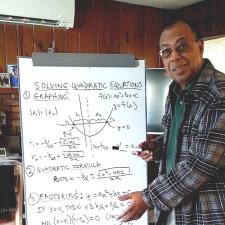
James R. answered • 10/29/19
Take Advantage of 30+ years of Technology, Science and Math
Disregarding the technical jargon, the fundamental principle of regenerative braking is to use the kinetic energy of the moving vehicle to slow it down by diverting that energy to a storage mechanism. Conventional brakes use friction to slow the vehicle, which generates heat from the energy that is being dissipated.
So your question, in a sense, postulates details of how various alternatives might work. The biggest problem is what to do with the energy that is being extracted from the vehicle. Modern electric vehicles use the energy to generate DC for (re) charging the batteries in the vehicle.
Here is an excerpt of a nice article from Engineering.com that has a clear explanation of how this works in an AC induction motor:
*** Quote: ***
"How Regenerative Braking Works in AC Induction Motors
When an AC induction motor is working as a motor, the traveling flux wave on the stator is moving faster than the rotor. Consequently, electrical energy is lost in the motor so energy is taken from a power supply.
Regenerative braking works in exactly the opposite way. When a vehicle with forward momentum wants to slow down, the flux wave must rotate slower than the rotor. To do this, the frequency of supply to the stator is reduced so the flux wave rotates slower than the rotor. When the flux wave travels slower than the rotor, the motor runs with negative slip. Since during regeneration the rotor is traveling faster than the flux wave, the relative forces on the rotor and stator reverse. If the torques reverse, the forces reverse. The motor begins to generate. But how can this be?
The electromotive force (EMF) in a circuit is the pushing force on the electrons integrated around the entire circuit. In normal operation, this driving force comes from the power supply. Energy is used by the motor, and a voltage is across it. During generation, the motor gives the electrons a push and increases the EMF of the circuit. This extra energy must be lost, and it is lost in the battery. The battery gains energy and is charged. Alternatively, if there is no battery, it will be lost in other parts of the circuit.
It is important to realize that an AC induction motor requires a power source to regenerate because a magnetic field must be induced on the conductors of the rotor for a force to be created."
"
*** End of quote ***




